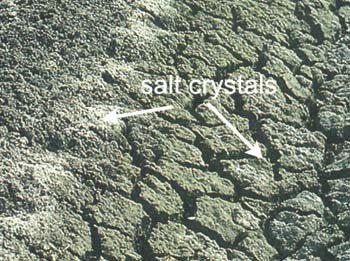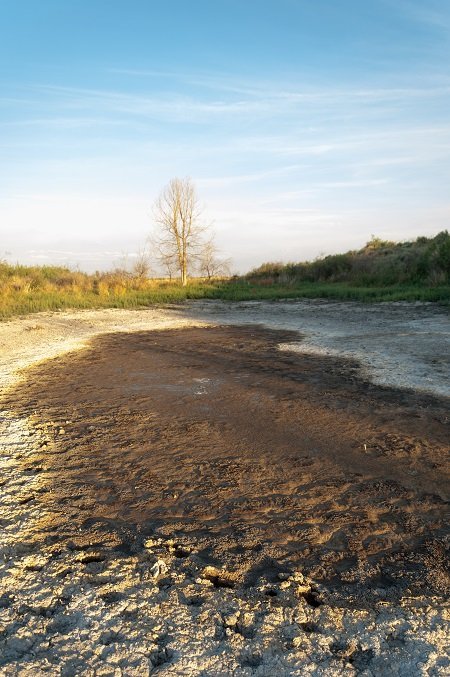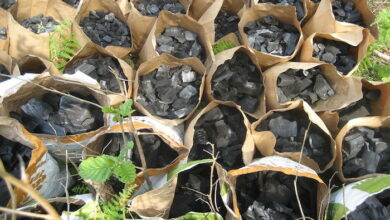
Soil Salinity and Management
The problem of soil salinity has existed for centuries. History records that the collapse of ancient Mesopotamia was partly due to crop failure caused by saline soils (1). Saline soils contain high accumulation of soluble salts; which include sulphates, carbonates, chlorides and in some cases nitrates of calcium, magnesium, potassium and sodium (2, 3). When there is a high build-up of sodium salts the soil is said to be sodic. Salinity in soils can occur naturally or as a result of human activity.
• Natural causes: Weathering of rock minerals or sediments with high salt content, flooding by sea or ocean water (after flood waters retreat, they leave behind large quantities of salt).
• Human activity: Salinity on agricultural lands is mainly caused by continuous application of irrigation waters with high salt concentration. When this water is removed via evaporation and transpiration salt crystals are left behind. Salinization can also occur from the upward rise of groundwater to the root zone, or from application of fertilizers and soil amendments.
Saline soils are prevalent in arid and semi arid regions of the world because these regions have limited amount of rainfall which help dissolve accumulated salts in the root zone or wash them down the soil profile.

Salinity and crops
Many crops are sensitive to saline soils. Highly saline soils can hinder crop growth, and reduce yield. Some effects of salinity on crops include.
• Reduction in water availability: Even when there is sufficient water supply, saline soils can hinder the availability of water to crops because the osmotic pressure of soil solution increases with high salt concentrations (4). Plants roots take up water through the process of osmosis, which involves the movement of molecules of a solvent (in this case water) from a region of lower concentration to a region of higher concentration (which are the plant cells concentrated with sugars and organic compounds). When the soil has high concentration of salt solutes plant uptake of water through this process is hindered.
• Toxicity to plants: High concentrations of some soluble salts can be toxic to crop growth and can also hinder the absorption of other mineral nutrients.
Some crops however are tolerant to saline soils. Tolerance levels vary between crops for example; sugar beet will tolerate soils of high salinity while barley, wheat and sunflower will tolerate soils of lower salinity (7). Other examples of crops which have high tolerance include date palm, cotton, spinach while crops of moderate tolerance include; include fig, pomegranates, grapes, olives, rice (6,7). To read more about crops and their salinity tolerance level visit: salinity tolerance in irrigated crops-https://www.dpi.nsw.gov.au.
Detecting salinity in soils
Some symptoms exhibited in highly saline soils include: White salt crystals on dry soil (figure 1), wilting leaves on crops despite sufficient water availability, scanty as well as stunted crop growth. Saline soils taste salty. Some growers confirm their suspicion of salinity by tasting the soil solution (https://wheatdoctor.org/saline-soils). Using this approach a bit of soil is placed in a container; some water is added to the container to completely cover the soil. The mixture is stirred up and when the water above the soil is cleared out the water is tasted. A brackish taste indicates high salt content (8).

The most popular method of measuring soil salinity, is by measuring the electrical conductivity (EC) (ability to conduct electricity) of the soil solution. Salts increase a solutions ability to conduct electric current (3). In this method water and soil are mixed together to make a solution, the solution is extracted and its electric conductivity is measured by passing electric current through it. The unit of the electrical conductivity is decisiemens per metre (dS/m). A soil with low salinity will have low dS/m ratings.
The soil salinity can also be measured by using electromagnetic conductivity meters.
Managing soil salinity
It is always useful to seek advice from soil experts on what methods are best for managing your soil if you confirm salinity. Some of the methods used to manage salinity include:
1. Monitoring the salinity of your irrigation water: Know the salinity level of the irrigation water used by measuring the salt content of the irrigation water.
2. Leaching: To reduce salt accumulation in the root zone irrigation water and drainage systems can be used to wash salts down the soil profile.
3. Resort (if possible) to growing crops or varieties with tolerance to salinity.
4. Use crop residues as mulch to reduce water loss from evaporation. This reduces the build up of salts in the root zone.
5. Apply gypsum (calcium sulphate dehydrate) to sodic soils: Sodic soils have high content of sodium chloride. Gypsum mixed into the layers of sodic soils replaces sodium with calcium, reducing the sodium level.
Bibliography and further reading
1. Why do civilizations fall? https://www.learner.org/exhibits/collapse/mesopotamia.html
2. Bauder et al (2014) Managing Saline Soils. Colorado State University Extension Fact sheet No.0503. https://extension.colostate.edu/docs/pubs/crops/00503.pdf
3. Rowell DL (1994) Soil science methods & applications. Longman Group, London. Pp 70.
4. Saline soils and their management- https://www.fao.org/docrep
5. Salt tolerance of plants https://www1.agric.gov.ab.ca/$department/deptdocs.nsf/all/agdex3303
6. Salty soils https://www.fao.org/docrep/R4082E/r4082e08.htm#7.3 crops and saline soils
7. Using saline water for irrigation https://www.dpi.nsw.gov.au.
8. Saline soils https://wheatdoctor.org/saline-soils
9. Managing saline soils https://www.dpi.nsw.gov.au/data/assets/pdf_file/0008/127259/Managing-saline-soils.pdf













I used to live in San Diego and just behind our property line was the first of a series of evaporate ponds for the salt works. By building many compost piles and applying them to our property we finally created a very fertile soil with good soil depth and could grow almost anything that didn’t prefer an acid soil. The soil went to a neutral PH. There is hope with a lot of work and compost material. Just watch greening the desert for conformation of my statements. And the salts on soil of my property had to be even greater than those in Jordan. And we started with the salt tolerant plants growing there to make our compost.